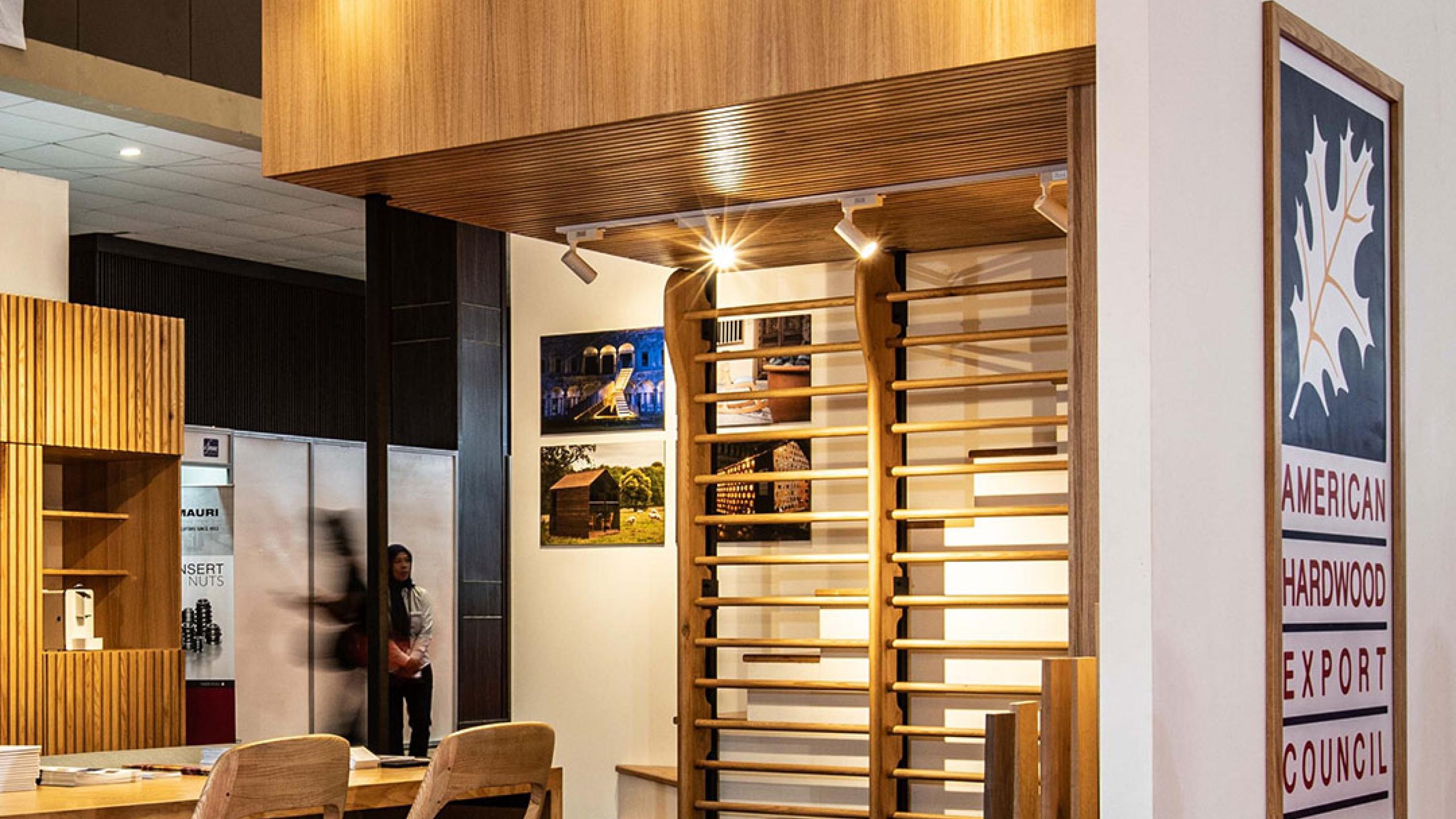The latest design for small apartments by Jarrod Lim shows how American red oak is the right choice for your wellbeing, the environment and your bank balance.
Jarrod Lim has had experience around the world that some designers can only dream of. Having worked with legends including Patricia Urquiola, Jasper Morrison and Tom Dixon, Lim now bases himself in Singapore and is one of the most respected designers in the region.
Having cut his teeth on brands such as Alessi and Kartell whilst in Milan, it is no surprise that Jarrod Lim continues to work with some of the world’s most influential design brands. One of his current projects with Herman Miller and his own research into workplace environments has challenged him to think differently about the way we live once the work day has finished: “Companies specialising in workplace products spend a lot of time and effort researching productivity, employee satisfaction and how people interact with each other and the office environment. They need to prove their furniture can improve the workplace and enable people to be happier and more efficient” he says. “This has shown me that we don’t think the same way when designing products for our homes. We don’t pay much attention to every little action that we preform once we walk in the door or how much time we spend in each location in the house”.
Being invited to design a stand for American Hardwood Export Council at an international furniture manufacturing show (IFMAC) from American red oak gave Lim the opportunity to test out some ideas that he had been working on based on apartment living in Asia. “I was trying to squeeze in a complete apartment into the 6×6 space without it feeling cramped and to show that American hardwoods are perfectly suited for this type of application”. Whilst many companies are responding to more limited living spaces by creating the same products on a smaller scale, Jarrod Lim took a different approach. Rather than limit himself to small furniture, Lim decided to consider the use of space from a different perspective, exploring how people actually live and use their homes and how furniture can perform multiple roles. This resulted in a large platform-style sofa with raised coffee table that can become a dining, play or work table. A raised platform bed that maximises space and a ladder-style guard rail that doubles as a piece of gym equipment allowing the space below the sleeping area to be used for working out the stress of a busy day.
When considering how our living environment affects our mental health, the material choice is as critical as the design. Increasingly, the use of natural materials in our surroundings are shown to be beneficial to wellbeing. Apart from adding visual warmth, timber has been shown to lower stress and have a positive impact on cognitive ability. Again, this is well researched in the workplace but less so in home surroundings. These learnings also come at a time when the environmental impact of the way in which communities choose to live is at the forefront of social and political discourse. In the creation of the apartment design, Lim chose American red oak. “Industrial design is more about the design process and how to approach and solve a problem that focusing on any specific field of design or method” say Lim “So when selecting materials the most important aspect is to have a solid understanding of the materials first…I work with a lot of different timbers based on their different characteristics…American species such as oak and walnut are already very popular because of their strength, durability and aesthetics. It’s easy for me to design products with them as most people are already in agreement about their beauty and value” he adds.
American red oak, according to Lim has been neglected by designers who don’t fully understand what it has to offer. Equal in strength and very similar in colour to its more well-known cousin – American white oak – red oak is the most abundant species in the US forest with volume increasing by 21.3 million m3 each year as new growth outstrips annual harvest. This means a high quality timber available at a very good price in most instances. The sheer volume and responsible management of the US forest resource also means that most shipments of American red oak are carbon negative when they arrive in Southeast Asia.
Those using the timber in the design of their homes can be confident that they are doing the best for their health, environment and bank balance by making the choice of American red oak. They also have the opportunity to enjoy the beauty of well-considered and executed designs by some of the regions top designers. Surely enough to make any home a happy one.




